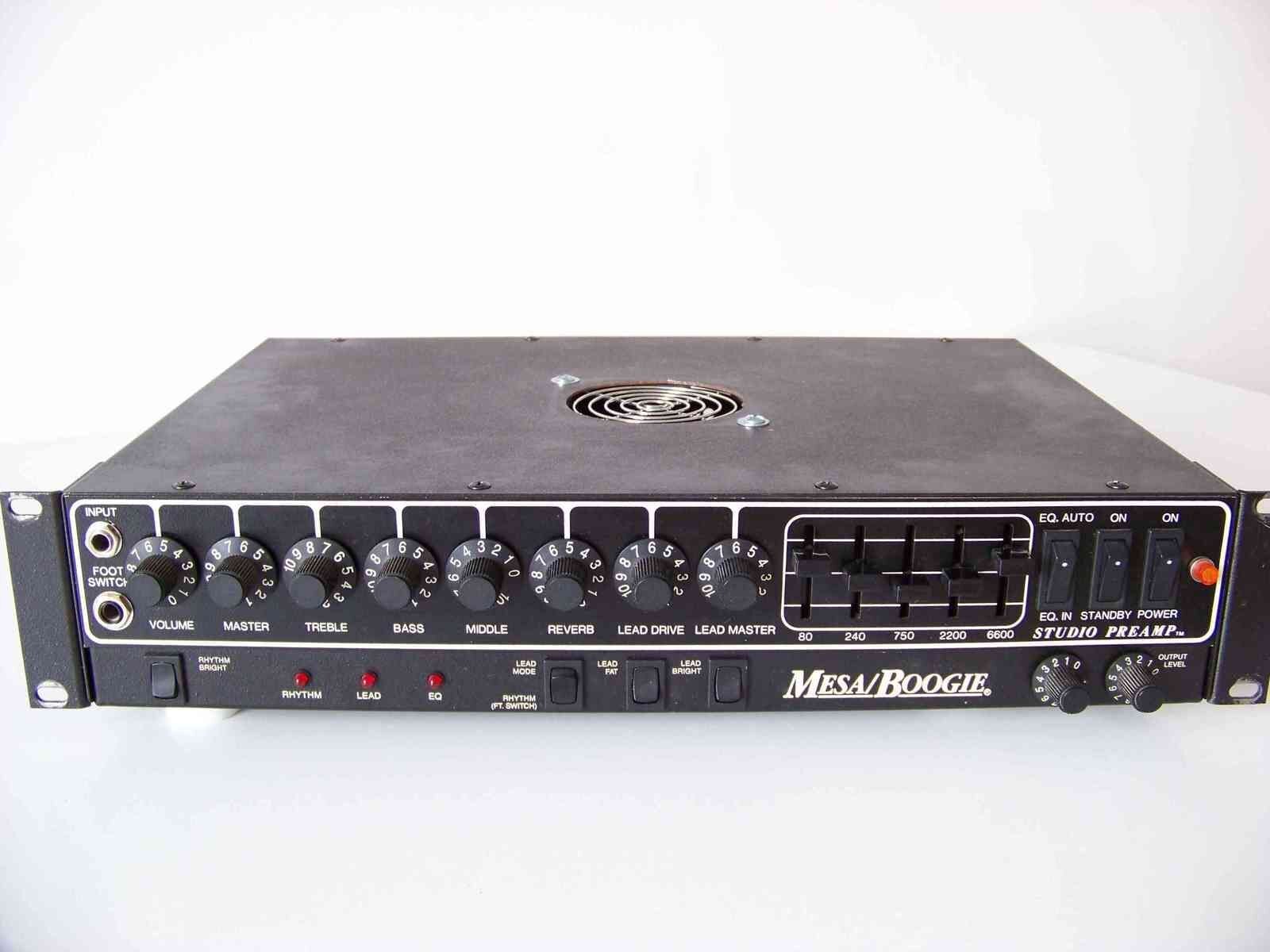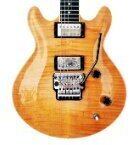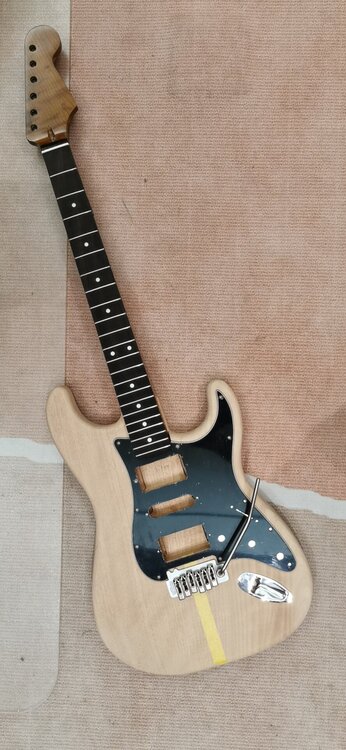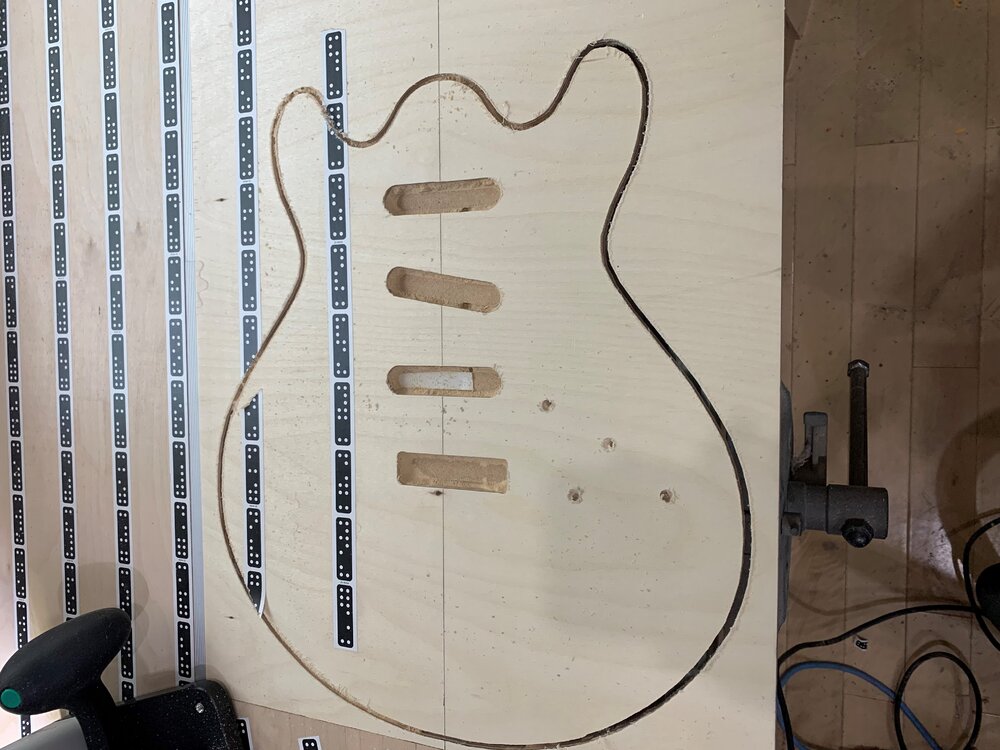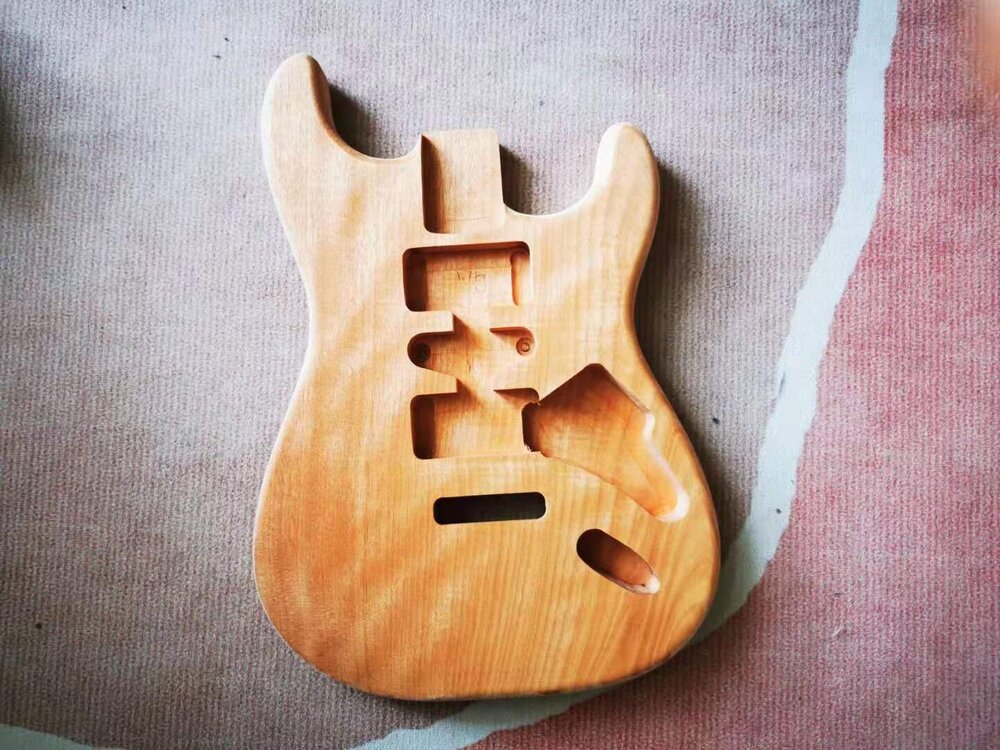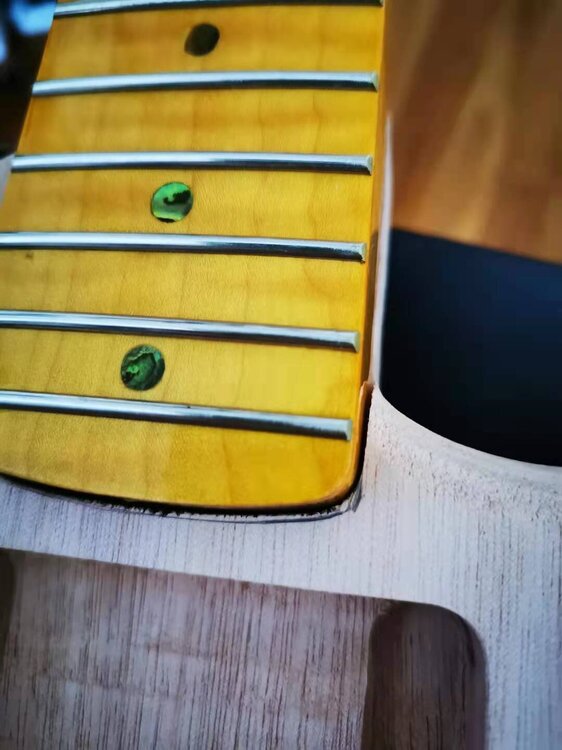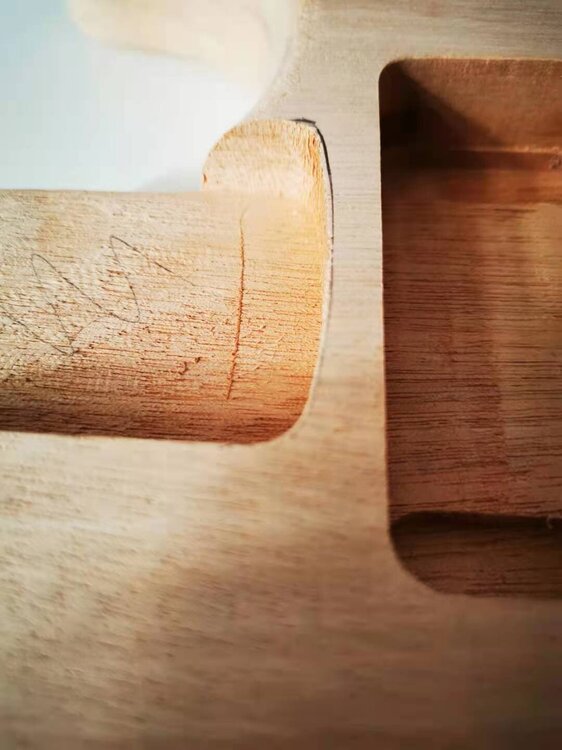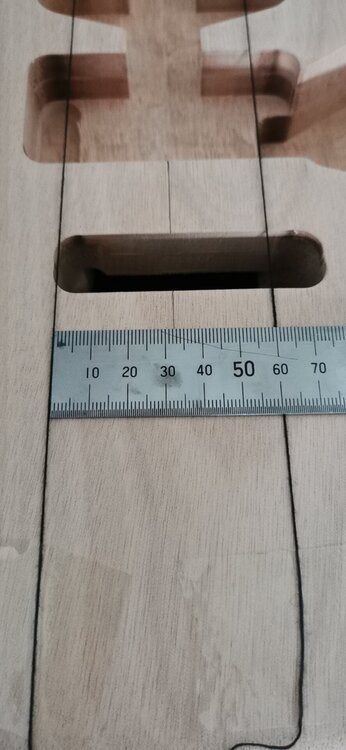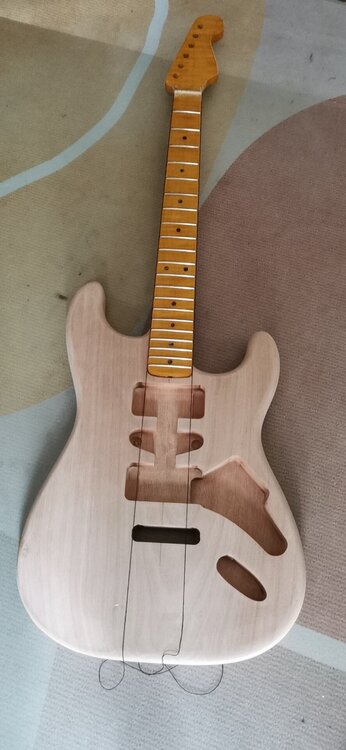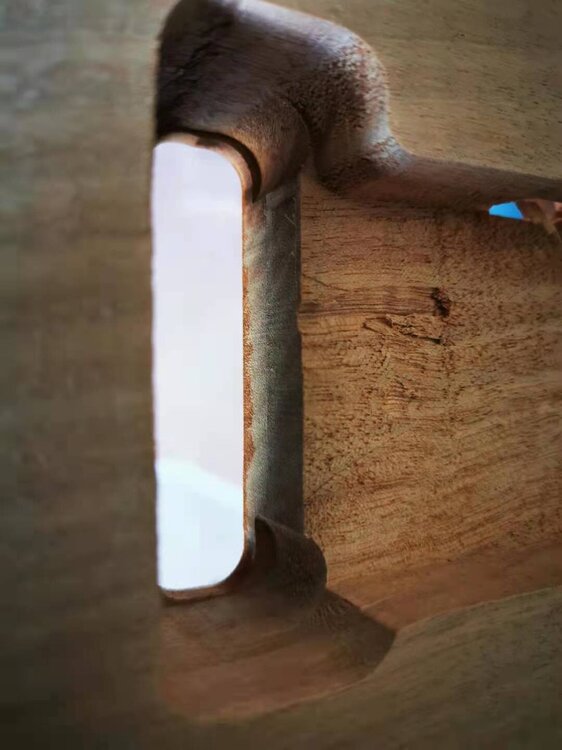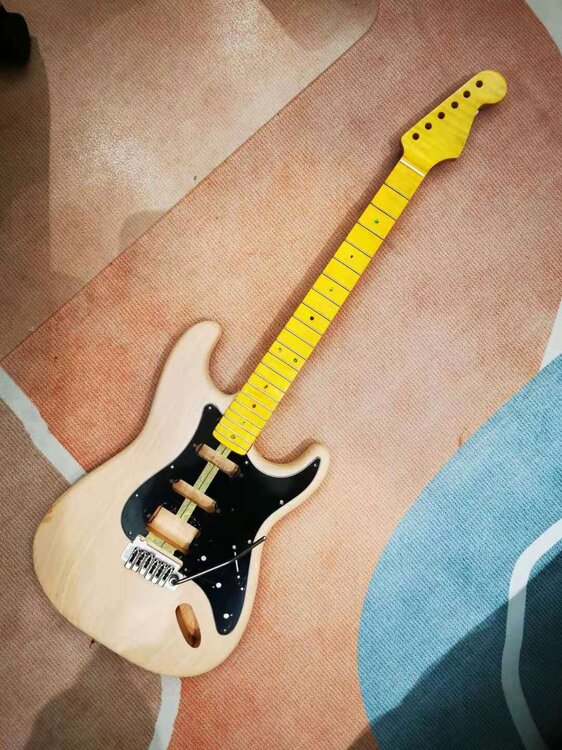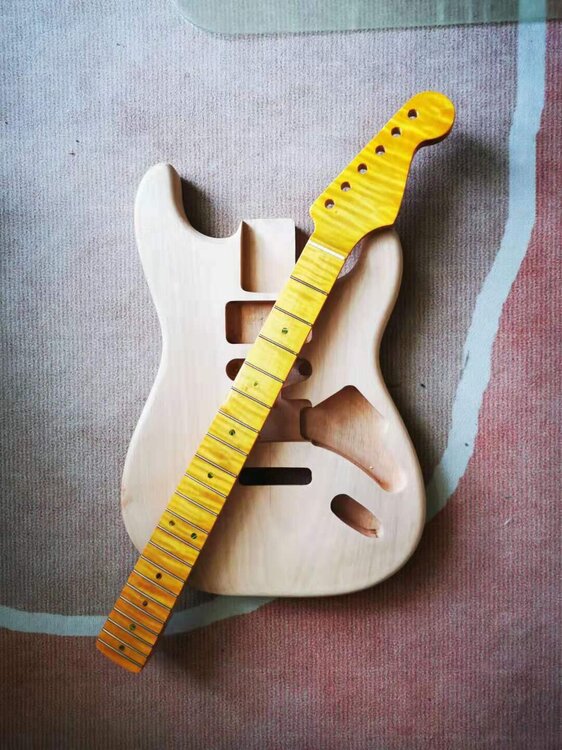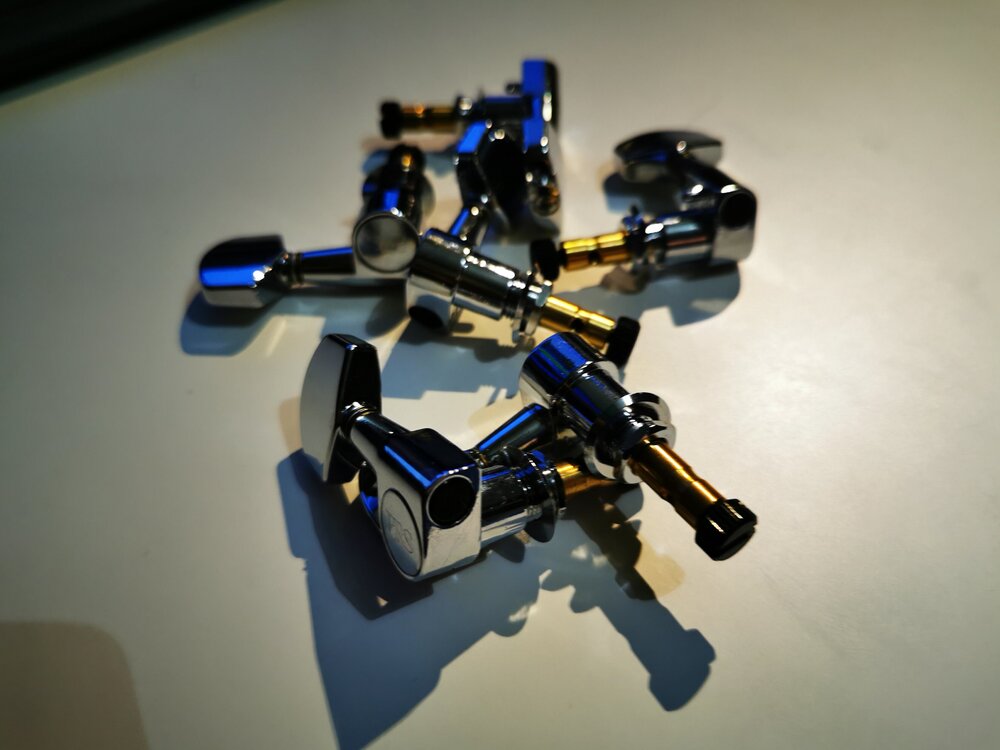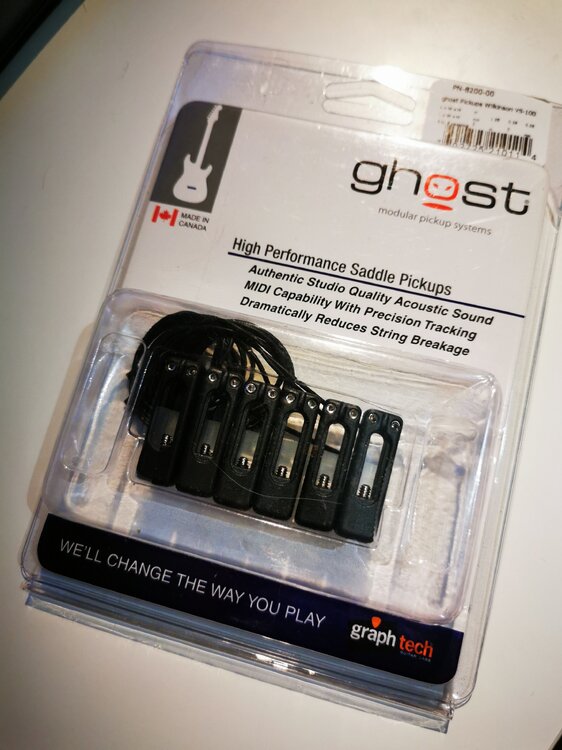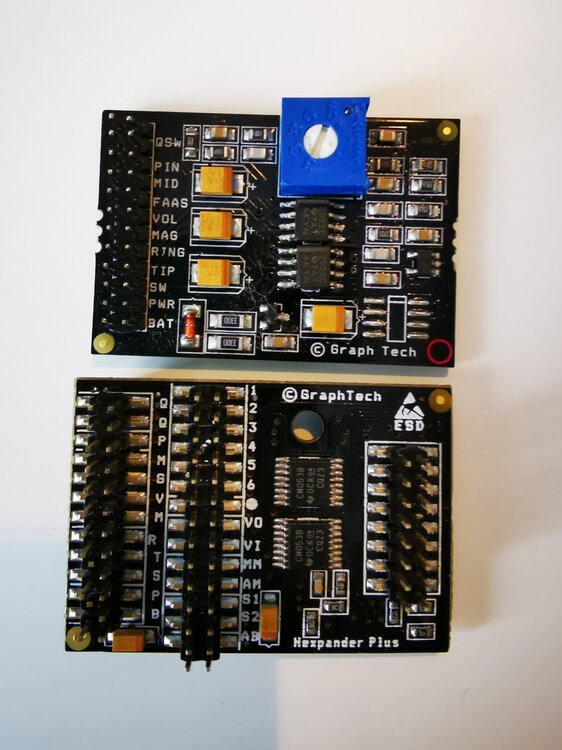-
Posts
517 -
Joined
-
Days Won
108
Content Type
Profiles
Forums
Events
Shop
Everything posted by Kiwi
-
Yes, I've noticed at least one seller offering what could be diplomatically described as complete crap for sale. Stuff that looks like it had been used by chimpanzees for training purposes. Still, the suppliers never seem to provide warnings. I ordered a perspex strat neck template recently, (22 fret fingerboard version!) and it fits the neck pocket perfectly. So it's the neck which is the issue. Hopefully a few passes with the router will tighten things up.
-
I completely agree and nearly made that point to them. But the same attitude is evident with every supplier I've approached so far and group think is strong over here. One I found did five string jazz bass necks (for a future project). They were offering me the moon on a stick to place an order, all the reassurances of return process and quality control and...I'd seen it all before. The photo showed the bloody truss rod was off centre! So far my experience hasn't been 'will they make a mistake' so much as 'how are they going to make a mistake' and there's a limit to how far I can anticipate. And the place that sent me the neck template didn't package it properly, it broke during shipping. Then I asked why the template was 22 frets. They replied that all the necks are 22 frets...! They're supposed to be shipping a replacement but haven't responded to my requests for a tracking number. (EDIT: The replacement arrived AND they gave me a refund...I sense some disorganisation.) For a few days, I was seriously thinking about setting up my own small outfit to manufacture matching sets of bodies and necks.
-
I discovered the roasted neck was twisted and had to send it back for a refund. There was no way I could have achieved low action on it. At that point the store rep told me they thought my expectations were too high...! And refused to sell me any more necks - even a replacement. I did get a refund though. I've purchased a neck template from perspex to check against neck heel and pocket. The neck pocket seems to fit the template perfectly. However I'm also toying with the idea of a glued joint if I can get the neck pocket tight enough because I have a back up mahogany laminated neck that needs some mods but might do the job. However it's not a strat neck even though its 25.5" scale length.
-
Put loads of distortion and delay on it, you'll never notice the difference.
-
Update time: The company I bought the neck and body from exchanged the 21 fret flame maple neck for a roasted flamed maple neck with 22 fret rosewood fingerboard. I don't yet own a guitar with a rosewood board so figured this might be a new experiment with the mahogany body. Tonally I don't expect too much of a difference to normal maple, perhaps the rosewood will mean slightly less obtrusive fret noise. Still haven't decided on finish for the HSH body but saw an interesting video on decorating a guitar with gold leaf...could get messy though. I also pulled the trigger on a second Kahler trem, this time an older 4300 X trem (US made version, not Chinese) in chrome. It has a locking function a bit like the Wilkinson. No screws or routing template so they're currently on order from Whammyparts.com and will be sent over with the bridge. This gives me an option of going with either a Wilkinson or Kahler depending on how much whammying I might feel like doing and how much faff there might be in getting the wilkinson to fit the routing provided. The sanding discs, MDF sheet and body filler have arrived so need to collect and maybe start work this afternoon on sanding and the neck pocket template. Speaking of the neck pocket, I've also found some 2mm thick sapele veneer which might work as a shim if glued in place. It's slightly harder than mahogany which is ideal and looks nearly the same. The tricky part will be trying to clamp it securely in place after gluing as the pocket is fairly confined. I also still have a laminated mahogany and maple neck left too. Although originally intended for an MSG shaped build with set in neck joint, it could be adapted for a bolt on build as well.
-
Update time: When I originally measured the neck I had, I was getting 321mm from nut to 12th fret. Double that and you get the scale length...roughly 25.3 inches. This was a total PITA to adapt as most strat necks are 25.5" so to get all the right sounds, I had to shift the pickup positions in CAD so that they stayed true to their position on the string. However the guy in Canada doing the templates did the same measurements and discovered the necks were actually 25.5"scale. This meant all I really needed to do was a straight copy and paste from the strat block I was using.| Palm meet face. I can only conclude that the tape measure I was using was inaccurate by a few mm but it was a salient lesson in the importance of having reliable measuring tools. Anyway, the templates are being made as I type. The dream of the clean machine is becoming real...
-
Speaking of HSS, I spent quite a bit of time thinking about what to do with these bits and pieces. The mahogany will probably make the instruments too warm for tradition strat sounds (although given how light the mahogany is, that isn't totally certain). But using humbuckers seemed to be a safe bet: Partscaster #1: A bit of a Scream Queen. This will be a light guitar with HSS layout and extra routing out the back of the instrument for the sustainer circuitry like the Ed OBrien strat. I have a sustainer installed in another guitar from NZ which I'm going to remove and reinstall in the lighter partscaster to turn it into a bit of a screamer. Some say basswood is a great wood to use with a sustainer but the first guitar I had it installed in was mahogany and it sounded great and 1.5kg, it might get within spitting distance of alder. Back in the eighties, the resident bass expert in my preferred music store in NZ was a Londoner by the name of Steve Hyde. He was heavily into goth/new romantic but died of a sudden heart attack about twenty years ago but he and I shared an interest in the UK music scene at the time. His first bass was a Shergold Marathon which he'd repainted by bombing it with spray cans of flourescent green, purple, pink and blue paint. I really loved that paint scheme and always wanted to do one of my own but mine will be slightly different (no green) and have a clear 2k lacquer over the top. Partscaster #2: Something heavier. The second body weighs 200g more and features slight figuring over the body. There is a strong temptation to leave it as natural, at least in the beginning until I see how much the body pops. I had a guitar tutor at high school who had a late 70's/early 80's Schecter Partscaster with all brass hardware and a mahogany body. So I was thinking about going down the gold route as it might look nice against the warmth of the body and neck. Don't know though - the biggest hurdle will be finding a Chinese made gold anodised HSH pickguard. But for the electronics I've pretty much decided to go with Dimarzio FRED in the bridge and Air Zone in the neck for jazzier sounds with something from my parts department for the middle single coil (a cheap Powered by Lace stacked humbucker which will need a black pickup cover I expect). I'll probably get a prewired harness and modify it for a push pull vol for coil splitting both the humbuckers and maybe figure out a cost effective method for getting neck and bridge in the middle position. After I've fixed the neck and body as far as possible and finish sanded to about 400 grit, I'm going to experiment sealing the grain with CA. The one great thing about all of this is that locally sourced parts are between 50% to 90% the cost of what I might pay in the UK. So there's room to play around and change things later if I don't like them. Right now, I've sourced an eighteen quid router, the router bits and clamps for mere pence and now need to get some MDF plus epoxy putty from which to make neck heel and pocket templates. Then I'll be in a position to plan the remedial routing.
-
In the meantime, I decided to check bodies and necks for accuracy by drawing centre lines and checking alignment: 1) Neck pocket wall and end of neck heel didn't fit and the pocket was 1mm too wide. Reviews warned me of this so it wasn't a total surprise. I bought a black three ply HSH pickguard and checked the pocket on that against the body. It aligns surprisingly well although still too wide (58mm, rather than 56) but the fit issue must be the neck heel. Sure enough, the curve is asymmetrical. 2) The floor of the neck pocket is uneven. There's no excuse for this really, it's just sloppy paths in the milling software. 3) I did a quick check of neck alignment as best I could using cotton thread. The alignment might be out by 2-3mm but it needs checking with straight edges to be sure. 4) The trem cavity was unfinished along one long side and a trial fit of the bridge suggested it might need widening for full function. I bought a router bit specifically designed for under cutting the top rout by about 3mm. So with the bridge, neck, HSS pickguard for one of the bodies I did a trial fit just to give me a sense of what to expect.
-
While casually perusing the likes of Aliexpress I discovered someone was selling one piece HSH mahogany strat bodies for something like US$65. So maybe it's time to dip my toe in the water and see how bad things really get. The same seller had flamed maple necks available. "Oh," I thought. "There's a good chance of them fitting if they're made by the same company". [Cue: foreshadowing] So the parts arrived and first impressions were very good. The grain on the flamed maple necks was stunning, one more so than the other. The bodies were incredibly light, the average weight for a mahogany strat body is 2kg, the ones I received clocked in at 1.7kg (with slight figuring) and 1.5kg for a plainer body. However there were issues, as expected. The first was they sent 21 fret necks with truss rod adjustment at the heel. And the bodies didn't have a recess for the truss rod tool. Normally, they wouldn't exchange a neck (despite guarantees on the listing they would) but because I'm in the same country postage was quite cheap, it was feasible. I asked them to exchange one neck for a 22 fret version with the headstock adjustment and more intense flaming. They'll send me a few photos of replacement necks to choose from later today.
-
The line up in 2007 with Greg, Lee and Simon has a nice vibe to it mainly because they're all friends. In the clip above, Luke doesn't even look that interested in what he's playing. (I'm a huge Lukather fan, BTW. Him, Nile Rodgers and Alan Murphy.) The rest of the band are depping.
-
I give you Toto2020. Steve P left, according to Luke, because of ongoing and unnamed tensions on tour. Luke has grown a stoner beard and Joseph Williams has stolen 20kg in body weight from David Paich. Plus with the backing musicians it's more like a review than it's ever done in the past. But more than that, what has happened to Luke's tone? His guitar used to sound so thick and warm, now it's like a wasp trapped in a bottle. BRING BACK GREG, LEE and SIMON I say.
-
I've sent the neck and bridge off to Canada for the body to be cut and routed. When it comes back, I'll do the carved top and sealing. Speaking of which, I've been mulling over the excess amount of spare parts I've accrued and realised that there's almost enough for two partscasters...if I buy more spare parts apart from the pickups and bridges. Alder or mahogany bodies and mahogany or flamed/birdseye maple necks here are about US$60-80 each.
-
Ooh, pics was already posted. Is it an S2?
-
I can sell you a set of PRS Mira pickups...a much cheaper way to release the gas.
-
Yes the chorus setting on the Space Echo is lush. Really warm and sweet sounding.
-
No Klon?
-
If you could have a dream set up, money no object, what would you get? The limits are three guitars, 5 effects (including multi effects or preamps), one amp and a cab or two combo amps. The only constraint is that you MUST be honest, no diving straight for the '58 Les Paul sunbursts or Dumble ODS because you can. You have to be a genuine fan of the kit. Here's mine: Guitars: Customised Martyn Booth Signature HSH Suhr Modern Carved Top (HSS) with sustainer and midboost PRS Single Cut Archtop Effects: Dunlop Crybaby Wah Effectrode PC2A compressor Amptweaker Tight Rock Pro Kemper Profiler head (non powered) Boss Waza Dimension D pedal Amp: Mesa Boogie MkV 1x12 combo Roland JC120 combo What's yours?
-
Solution really depends on the guitar. 1) Is the neck straight? Check neck bow and make sure the neck is straight by using either a straight edge or by sighting down the neck from the headstock (less reliable than a straight edge). If it's too curved twist the truss rod a quarter turn clockwise, it shouldn't need more than that. If there's a backbow then turn the truss rod a quarter turn anticlockwise for more bow. If you need to do more than half a turn then take it to a luthier as you'll have a serious neck bow issue. Next, you'll need to check string height. Lower the strings until you get fret buzz and then raise the string saddles by a half turn each screw until the strings just start to buzz in some places but not others. 2) Where is it buzzing? a) If it's buzzing above the 12th fret and you've already straightened the neck and it's a bolt on neck then you'll need to adjust the neck angle. Take the neck off and remove a shim or replace it with one that isn't so thick. For Fender/Musicman microtilt necks, you won't need to remove the neck or slacken the strings, just tweak using an allen key in the hole in the neck plate. Otherwise, reattach neck, tune strings to pitch and check for buzz in the same places. You should notice a difference. If it's neck through or glued in then get a luthier to look at it. b) If it's buzzing below the 3rd fret then your nut is too low. You'll need a new nut and cut string slots in it that are slightly higher than the ones at present. It's best to take it to a luthier as it needs super thin files and good eyesight. c) If you're getting buzz on single frets then you'll need a fret level - get a reputable luthier to do it because if you take off too much metal from the frets the guitar will need a complete refret. d) If you're getting buzz on one side of a set of frets further down the neck and then on the other side further up the neck then you'll have a neck twist. The prognosis isn't great but a skilled luthier might be able to steam the neck straight or replace the fingerboard and install stiffening to correct the twist. It won't be cheap. Otherwise, is it comfortable? Is there fret buzz relatively consistently across the whole fingerboard? If so, raise the string saddles until the buzzing just disappears and your guitar should be 80% set up. With the exception of intonation.
-
I had a go on the A5 basses and loved how they felt and sounded. Just never had a purpose for one in my collection.
-
Godin make some lovely stuff.
-
A set of PRS SE low mass locking tuners arrived last week. Along with a set of Graphic piezo saddles. They'll go with the Graphtec acoustiphonic and hexpander circuits.
-
I don't think it's bunk but it really depends on terms of reference. If someone just wants an instrument to make a noise, well...yeah. A piece of driftwood will do that...or cardboard...or concrete. All it proves is the importance of rigidity. If someone wants to talk about the influence of structural rigidity, mass, density and dampening on timbre then I think there's plenty of room for discussion. But there's also a lot of misinformation out there as well...like the influence of species. At the end of the day, I'm aware that a number of manufacturers like Dingwall and Ernie Ball (and maybe PRS) just weigh a piece of wood from a desired species and if it's within acceptable range, it goes into an instrument. Their instruments, on the whole, are remarkably consistent in sound given how variable wood can be in its characteristics.
-
I don't think look has anything to do with function, it's got more to do with marketing and memorability as you suggest.


